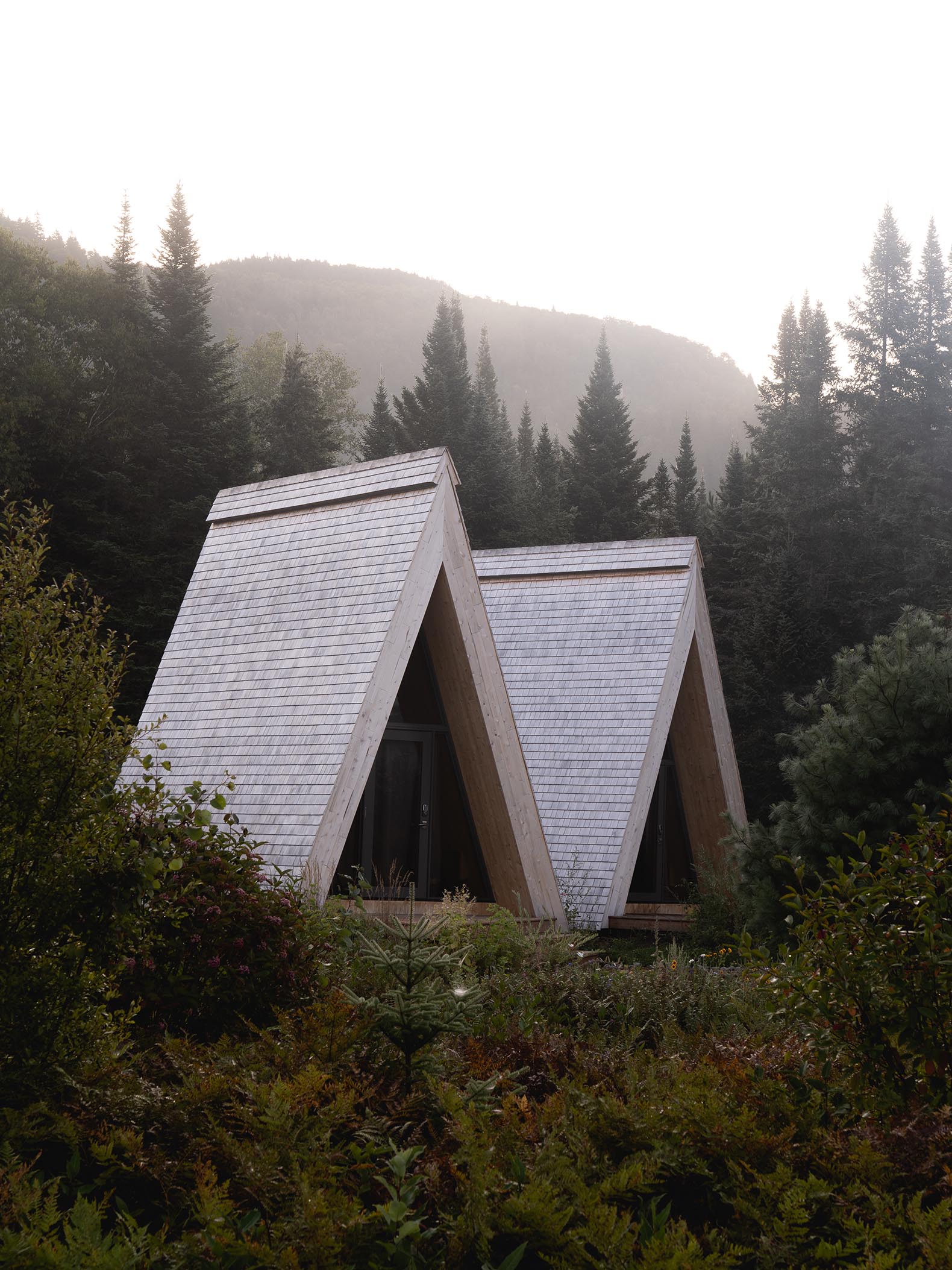The café lounge opens onto the river with large windows facing west with views of Mont-Tremblant and sunsets behind the Laurentian Mountains. Composed of two floors that are organized around a chimney, the materiality of the building is sober; the charcoal-coloured steel roofs and natural hemlock siding are reminiscent of vernacular farm buildings.
The camp of four compact triangular-shaped, cedar-shingled micro-cabins sits to the south of the cafeteria, organically arranged and connected by a winding driveway. Each contains a king bed, sofa, and gas stove.

Farouche Tremblant by Atelier l'Abri. Photograph by Raphaël Thibodeau.

Farouche Tremblant by Atelier l'Abri. Photograph by Raphaël Thibodeau
Project description by Atelier L'Abri
Set against Mont-Tremblant National Park, and nestled within the Devil’s River valley, the Farouche agrotourism site offers a singular and unique concept for the Laurentians region of Quebec. Making the most of the natural and untamed qualities of the territory of almost one hundred acres, the project combines a Nordic farm, a café-bar, four-season micro-refuges, and an outdoor basecamp.
On the north side of Chemin du Lac-Supérieur, a barn serves as the headquarters for the farm activities. The route that leads to the small organic vegetable farm goes through the tunnel greenhouses, flower fields, and fallow land. The hiking trails begin behind the agricultural building and allow visitors of the Farouche site to explore the mountains of the Devil’s valley.
On the river side, to the south of the road, the café is at the heart of the activities offered on the site. One enters this welcoming building through the small market, which offers visitors seasonal products from the Farouche vegetable farm, as well as other goods such as cheeses, beers, and wines from local producers. The dining area and its kitchen offer passing visitors and cabin guests the opportunity to taste meals from the farm's production.

Farouche Tremblant by Atelier l'Abri. Photograph by Raphaël Thibodeau.
The café lounge opens towards the river: its large west-facing windows offer unique views of Mont-Tremblant and sunsets behind the Laurentian mountaintops. At its centre, the wood stove’s fire invites patrons to gather together and observe the ever-changing silhouette of nature. Nestled in the cathedral roof, a mezzanine space offers a quiet, set-back living room. The building’s materiality is sober; the charcoal-coloured steel roofs and the natural hemlock siding are reminiscent of vernacular farm buildings.
The cedar shingle micro-cabins camp stands south of the café. Organized organically and connected by a winding path, the four small A-frame shelters each contain a king bed, a sofa, and a gas stove within their compact plan. Minimalist, in essence, the buildings recede in the landscape and allow guests to fully immerse in the wild beauty of the Devil’s River.
The Farouche project was documented by photographer Raphaël Thibodeau over a twenty-four-hour period in order to capture the evolution of the site, from the sunrise over the river, to the nocturnal observation of the cabins illuminated by the moonlight.
















































